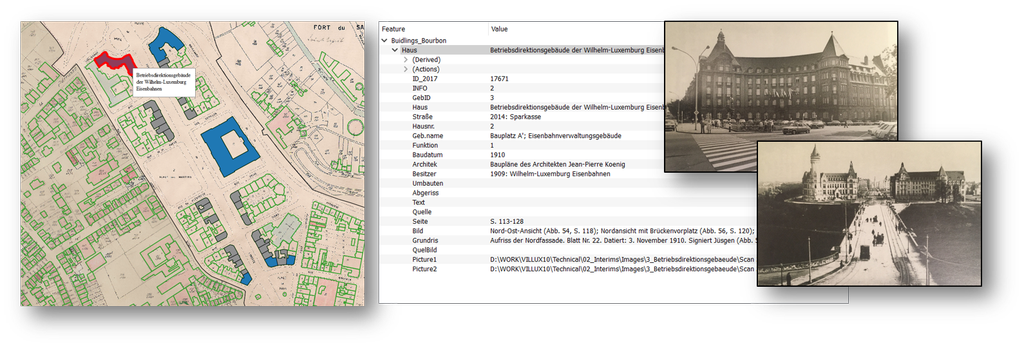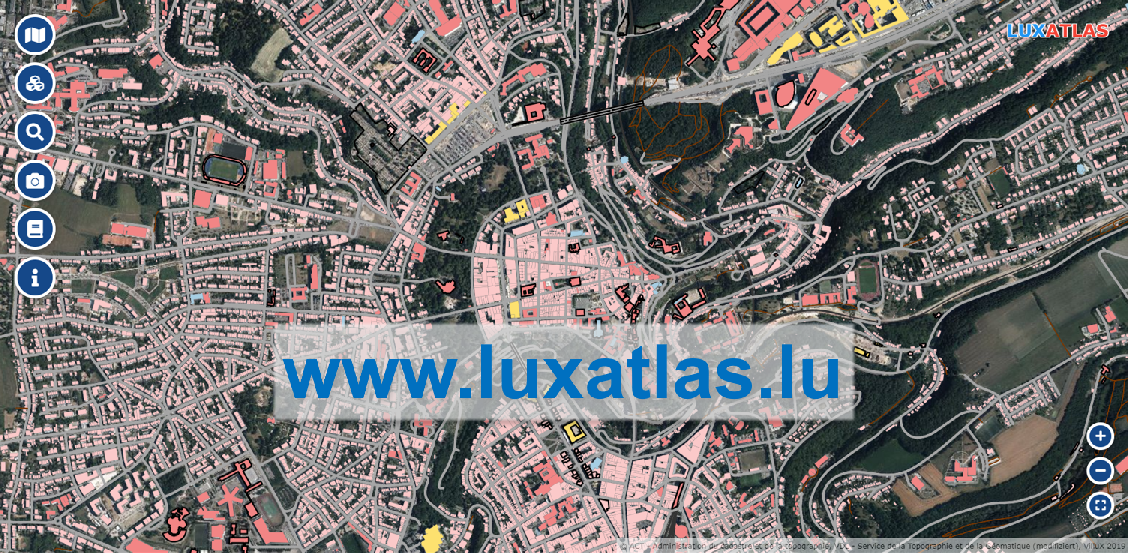One main focus of the project is to retrace the city’s development from the 1820s until today, with a particular focus on long-term adjustment processes to changing framework conditions (e.g. industrialization; development of infrastructure (transport, lifelines); new functional areas (European headquarters, financial center); etc.).

According to the so far established guidelines of the CIHV (International Commission for the History of Towns), derived digital information are implemented into a database and provide user friendly access to these historical information via a web-atlas interface. Main historical time periods of the city of Luxembourg cover:
1822
1822
The original cadastre from the 1820s, showing the city area at that time and its surroundings within the city’s present limits. This map will present Luxembourg as a fortress, constricted by its monumental ramparts.
1862
1862
The climax of Luxembourg fortress in 1867, providing insights into the extend of the fortress and the city just before starting to be razed in the upcoming year.
The reproduction of the map from the turn of the twentieth century, highlighting the impact of the dismantling of the fortress by the newly built railway infrastructures, the neighborhoods on the plateau Bourbon as well as several new industrial buildings.
1962
1962
The situation around 1950s, revealing in particular the continued growth of the city. Especially due to the incorporation’s of 1920, the destruction caused by the Second World War and the adaptation of transport infrastructure by an increased construction of roads as well as bridges.
2017
2017
The reproduction of the modern city plan, revealing the developments of the past 60 years. By the “planned city (ville nouvelle)” at Kirchberg since the 1960s and the in later decades expansion of ever new residential areas and industrial zones in the peri-urban areas.
These historical time stamps are converted into digital information while geo-referencing, harmonizing and transferring them into vector information. This enables the potential to interlink extracted features within a database, allowing finally the users to highlight, mask or combine specific information as required over a web-based atlas interface.



